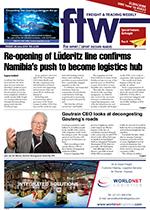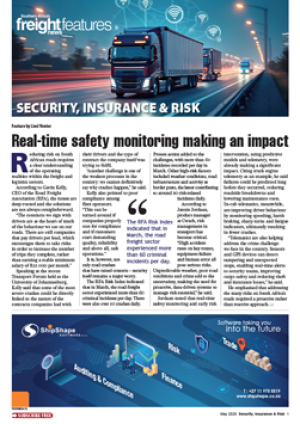While immediate growth prospects for the continent are pegged at 1-2%, the picture is much more nuanced than that in the view of Africa House trade consultancy director, Duncan Bonnett. “If you look at the actual numbers you’ll see that in East and West Africa, excluding Nigeria, growth is much higher.” Add to Nigeria the economies of South Africa and Angola, or “the laggards of sub-Saharan Africa” as Bonnett calls them, as well as some of the North African countries that haven’t recovered from the Arab Spring, and the growth rate of the rest of the continent is more like 5-8%”. This trade momentum, Bonnett told exporters and logistics operators at a recent Transport Forum gathering, had significant infrastructural impetus behind it and deserved closer scrutiny. Along with research conducted by PWC, Africa House has found that “infrastructural spend in sub-Saharan Africa is still going to grow by at least 10% a year and will exceed $180 billion by 2025”. It was one of the reasons, Bonnett added, why there was so much happening around corridor development, particularly around the eastern seaboard south of the horn of Africa, and why ports like Nacala, Beira, Maputo, Walvis Bay, Luanda and even Lobito were all upgrading their infrastructure. Referring to the African Continental Free Trade Area that has been ratified by 24 countries and that is officially under way, “albeit just in theory”, he said exporters eager to unlock opportunity across the SADC region and the Eastern African Community should let data guide their immediate future plans. Latest leading economic projections, Bonnett said, showed that by 2023 there would be five economies with a GDP over $100 billion. A further five economies will have GDPs above $50 billion in the next five years.
To give this assessment context, Bonnett said “it is important to consider that five years ago in sub-Saharan Africa the only economies worth watching were Nigeria, South Africa and Angola which, depending on what the oil price was doing, was jumping in and out of that picture”. All of that has changed, particularly in Eastern Africa “where we are seeing large investment in energy and related infrastructure”, he said.
Infrastructure spend in SSA set to grow by 10% a year
28 Jun 2019 - by Eugene Goddard
0 Comments
FTW 28 June 2019

28 Jun 2019
28 Jun 2019
28 Jun 2019
28 Jun 2019
28 Jun 2019
